Cuicuilco Circular Pyramid: Ancient Astronomical Observatory And Place Of Power
A. Sutherland - AncientPages.com - Before being destroyed and abandoned in 50 B.C. by a volcanic eruption, Cuicuilco was an important ancient site on the southern shore of Lake Texcoco in the southeastern Valley of Mexico.
Today, an entire ancient city is buried beneath the ashes, but one structure survived - the Cuicuilco circular pyramid.
 What is left of the remains of Cuicuilco city is buried and preserved in the lava flow. But one pyramid, a circular pyramid showing designs of an agricultural system, was preserved, with the lava flow flowing around it. Image credit: Siebe, 2000
What is left of the remains of Cuicuilco city is buried and preserved in the lava flow. But one pyramid, a circular pyramid showing designs of an agricultural system, was preserved, with the lava flow flowing around it. Image credit: Siebe, 2000
Cuicuilco's circular pyramid was an imposing sight. This ancient structure was nearly 20 meters high and more than 110 meters across. The pyramid was raised as a religious monument, crowned by a temple built on the terminal platform, and surrounded by tombs. The building of such a structure required a protracted and organized effort under the command of the priests.
It also served as an ancient astronomical observatory. Scientists discovered that at Cuicuilco, when observing the circular pyramid, the Sun rises on March 23 and September 20 above a mountain peak on the eastern horizon.
Cuicuilco was initially founded as a farming village at about the same time as Coapexco, about 1100 B.C. It had one of the earliest irrigation systems in the Central Mexican highlands. In time, the place grew larger and larger, and by 200 BC, Cuicuilco was one of the most important and larger centers in Central Mexico. It has been estimated that its area covered approximately 400 ha, with 20,000 people.
 Mural depicting the Cuicuilco civilization in the past. Image credit: revistabuenviaje.com
Mural depicting the Cuicuilco civilization in the past. Image credit: revistabuenviaje.com
According to ancient Nahuatl translations, Cuicuilco is interpreted as the 'Place of Power' or the 'Place of the Rainbow' and the 'place where they make songs and dances.
The circular pyramid was first discovered in 1920 by archaeologist Manuel Gamio. The first investigations at Cuicuilco were carried out by Byron Cumming, between 1923 and 1924. Cumming found the civic core of the site and the main pyramid.
In the 1990s, archeological digs at this site could shed even more light on the location of the buried city of Cuicuilco.
Archaeological excavations revealed that this place served as religious site. Stone offerings were found, and the use of ceramics as grave goods. The most significant find was charcoal samples found under the layer of lava.
The city grew around a large ceremonial center with pyramids and an associated urban area with plazas and avenues bordering a series of small, shallow pools.
The last eruption of the volcano Xitle took place in the 2nd century, and lava covered the site as far as 10 meters deep. The ancient city of Cuicuilco was destroyed; people left the area, leading to the spread of their culture.
The glory and power of Cuicuilco were buried beneath the ashes.
 Volcano Xitle - Image credit: Wikipedia
Volcano Xitle - Image credit: Wikipedia
Circular pyramids are not as unusual as they might seem. A great, ancient archaeological site, Guachimontones ('Los Guachimontones'), is located just outside the modest little town of Teuchitlán, Jalisco, 43 kilometers (26 miles) west of Guadalajara, Mexico.
At first, very little was known about who had built this remarkable place with rounded pyramids, several conical mounds or pyramids, terraced patios surrounded by circular ball games, a theater, some terraces, buildings, and sophisticated ancient shaft tombs, dated to the first century AD.
The graves had small burial chambers at the bottom of vertical cuts up to 60 feet deep.
Written by – A. Sutherland - AncientPages.com Senior Staff Writer
Updated on October 11, 2022
Copyright © AncientPages.com All rights reserved. This material may not be published, broadcast, rewritten or redistributed in whole or part without the express written permission of AncientPages.com
Expand for referencesMore From Ancient Pages
-
 Mystery Of The Scottish Medieval Wanderer And The Bog Bodies At Cramond Investigated By Scientists
Archaeology | Mar 28, 2022
Mystery Of The Scottish Medieval Wanderer And The Bog Bodies At Cramond Investigated By Scientists
Archaeology | Mar 28, 2022 -
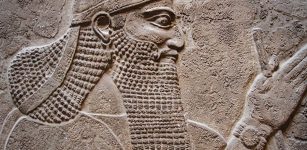 Unexpected Discovery Of 600 B.C Assyrian Palace In Shrine Destroyed By Isil Militants
Archaeology | Mar 2, 2017
Unexpected Discovery Of 600 B.C Assyrian Palace In Shrine Destroyed By Isil Militants
Archaeology | Mar 2, 2017 -
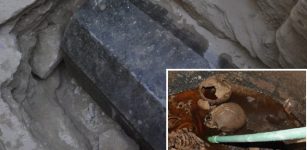 Thousands Want To Drink Red Liquid From The Granite Sarcophagus In Egypt
Archaeology | Jul 23, 2018
Thousands Want To Drink Red Liquid From The Granite Sarcophagus In Egypt
Archaeology | Jul 23, 2018 -
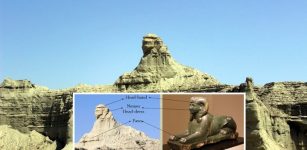 Mysterious Balochistan Sphinx Has An Ancient Story To Tell – But Is An Advanced Ancient Civilization Or Mother Nature Hiding Behind The Story?
Featured Stories | Feb 3, 2018
Mysterious Balochistan Sphinx Has An Ancient Story To Tell – But Is An Advanced Ancient Civilization Or Mother Nature Hiding Behind The Story?
Featured Stories | Feb 3, 2018 -
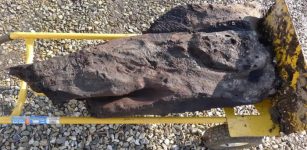 Surprising Discovery Of Oldest Decoratively Carved Wood In Britain
Archaeology | Jun 7, 2023
Surprising Discovery Of Oldest Decoratively Carved Wood In Britain
Archaeology | Jun 7, 2023 -
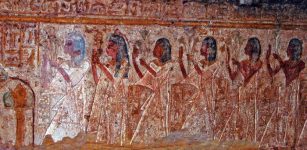 Rock-Cut Tomb Of Pennut, Viceroy Of Nubia Under Reign Of Ramses VI
Civilizations | Dec 7, 2018
Rock-Cut Tomb Of Pennut, Viceroy Of Nubia Under Reign Of Ramses VI
Civilizations | Dec 7, 2018 -
 Ancient DNA Yields Surprising Findings On World’s Earliest Seafarers
Archaeology | Jun 30, 2022
Ancient DNA Yields Surprising Findings On World’s Earliest Seafarers
Archaeology | Jun 30, 2022 -
 Kussara – Ancient Lost City Of The Old Hittite Kingdom
Featured Stories | Jul 7, 2021
Kussara – Ancient Lost City Of The Old Hittite Kingdom
Featured Stories | Jul 7, 2021 -
 On This Day In History: Declaration Of Independence Of The Mexican Empire Is Drafted – On Sep 28, 1821
News | Sep 28, 2016
On This Day In History: Declaration Of Independence Of The Mexican Empire Is Drafted – On Sep 28, 1821
News | Sep 28, 2016 -
 Arrival Of A Mysterious Figure Triggers Unexplained Phenomena In Iceland – Strange Story From A Norse Saga
Featured Stories | Feb 16, 2025
Arrival Of A Mysterious Figure Triggers Unexplained Phenomena In Iceland – Strange Story From A Norse Saga
Featured Stories | Feb 16, 2025 -
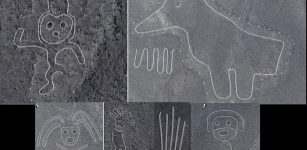 168 Unknown Geoglyphs Discovered In The Nazca Desert By Drones
Archaeology | Dec 19, 2022
168 Unknown Geoglyphs Discovered In The Nazca Desert By Drones
Archaeology | Dec 19, 2022 -
 What Were Victorian Bathing Machines?
Ancient History Facts | Jun 9, 2018
What Were Victorian Bathing Machines?
Ancient History Facts | Jun 9, 2018 -
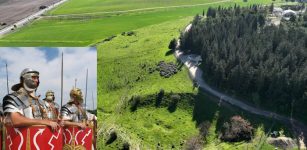 First Roman Military Amphitheater Unearthed Near Megiddo
Archaeology | Jun 1, 2022
First Roman Military Amphitheater Unearthed Near Megiddo
Archaeology | Jun 1, 2022 -
 On This Day In History: Explorer Of The New World Amerigo Vespucci Born – On Mar 9, 1451
News | Mar 9, 2017
On This Day In History: Explorer Of The New World Amerigo Vespucci Born – On Mar 9, 1451
News | Mar 9, 2017 -
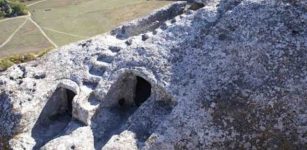 Mangup-Kale: Spectacular Ancient Cave City Hidden In The Crimean Mountains And Home To The Mysterious Kingdom Of Feodoro
Civilizations | Aug 4, 2015
Mangup-Kale: Spectacular Ancient Cave City Hidden In The Crimean Mountains And Home To The Mysterious Kingdom Of Feodoro
Civilizations | Aug 4, 2015 -
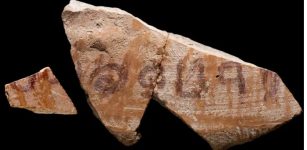 Rare 3,000-Year-Old Jerubbaal Inscription Of Biblical Judge Discovered In Israel
Archaeology | Jul 14, 2021
Rare 3,000-Year-Old Jerubbaal Inscription Of Biblical Judge Discovered In Israel
Archaeology | Jul 14, 2021 -
 Native Americans’ Unexplained Encounter With A Strange Underground Humanoid 500 Years Ago – Who Was This Being?
Featured Stories | Oct 31, 2024
Native Americans’ Unexplained Encounter With A Strange Underground Humanoid 500 Years Ago – Who Was This Being?
Featured Stories | Oct 31, 2024 -
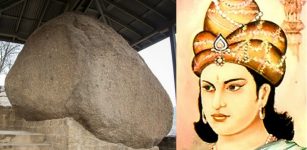 Mansehra Rock Edicts – Last Words Of Emperor Ashoka
Featured Stories | May 27, 2019
Mansehra Rock Edicts – Last Words Of Emperor Ashoka
Featured Stories | May 27, 2019 -
 Unexplained Mystery Of The Untraceable Stone-Throwers – Strangeness In North America, Belgium And Indonesia – Part 1
Featured Stories | Nov 11, 2019
Unexplained Mystery Of The Untraceable Stone-Throwers – Strangeness In North America, Belgium And Indonesia – Part 1
Featured Stories | Nov 11, 2019 -
 Seven Gods Of Happiness – Bring Luck, Prosperity And Health In Japanese Folk Belief
Featured Stories | Jun 29, 2020
Seven Gods Of Happiness – Bring Luck, Prosperity And Health In Japanese Folk Belief
Featured Stories | Jun 29, 2020
